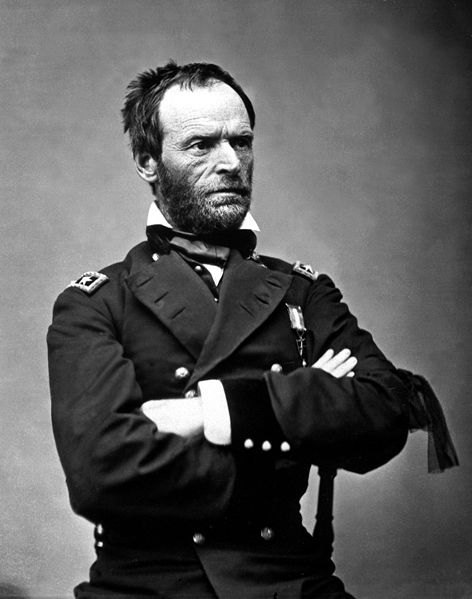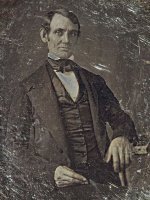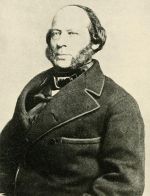This is a section of the book Tallmans In The Civil War. This page covers Edgar Haight Tallman, you can read on, or click here to browse the rest of the book.
Edgar Haight Tallman
Younger brother of William H., Edgar was born in Irondequoit, NY and moved as a child with the family to the Coldwater, MI area. Edgar had been a student at the University of Michigan for a year before deciding to enlist at the age of 21 on August 13, 1862 as a Private in Company “C”, 19th Michigan Infantry, at Coldwater, MI.
The Nineteenth was organized at Dowagiac under the direction of Colonel Henry C. Gilbert of Coldwater, and was composed of companies recruited in the Second Congressional District. The Regiment was mustered into service Sept. 5, 1862, with 995 officers and enlisted men. Company “C” officers: Captain Charles. P. Lincoln, First Lieutenant Smith W. Fisk, and Second Lieutenant Lucius M. Wing, all of Coldwater.
The Nineteenth left its camp Sept. 14th for Cincinnati, Ohio and became a part of the First Division, Army of the Ohio. In January 1862 the regiment was a part of Baird’s Division, Army of Kentucky, which afterwards formed a part of the Army of the Cumberland.
The first serious engagement in which the Nineteenth participated was at Thompson's Station, Tenn. on March 5, 1863, where it displayed those qualities of heroism that afterwards distinguished this regiment on many a hard fought field.
The Nineteenth with the other regiments of the brigade was furiously assaulted by a Confederate force under General Van Dorn, estimated at 18,000 strong and a sanguinary conflict ensued. The confederates made three separate charges upon the brigade which were gallantry repulsed. In one of which the Nineteenth captured the colors of a Mississippi regiment, the engagement lasted five hours until their ammunition was exhausted and the overwhelming number of the Confederates made it necessary for them to surrender.
The loss of the Nineteenth in this engagement was 113 killed and/or wounded. The Union troops didn't surrender until the enemy had paid dearly for their victory. After the officers had been exchanged and the enlisted men paroled, the regiment was reorganized at Camp Chase, Ohio. In June they returned to Nashville and took part in the advance upon Tullahoma. The Nineteenth assisted in fortifying McMinnville, Tenn. in October, and at that time was part of the Second Brigade, Third Division, Twentieth Corps. The regiment was employed on the fortification about McMinnville in building bridges and block houses until May, when it joined General Sherman's (right) army on the Atlanta Campaign.
At Resaca, Ga. May 15, 1864, the Nineteenth made a desperate charge upon the enemy’s line and almost in the nature of a forlorn hope, gallantly captured a battery, but at a fearful loss of life. Colonel Gilbert was mortally wounded and the regiment lost 80 officers and men killed and/or wounded. Major E. A. Griffin succeeded to the command of the regiment after the death of Colonel Gilbert, which occurred May 24th. The next day they fought in a severe engagement at New Hope Church, Ga., with a loss of over 50 killed and/or wounded. The Nineteenth took an active part during the entire campaign, engaging the enemy at Golgotha Church, where Major Griffin was mortally wounded. At Culp's Farm, and at Peach Tree Creek, near Atlanta, where it was assailed by the enemy and lost 40 in killed and/or wounded in repulsing the attack. Upon the surrender of Atlanta, the Nineteenth moved into the city and remained there until October.
Major Baker succeeded to the command of the regiment and when General Sherman started with his army on his march from Atlanta to the Sea, the Nineteenth was still a part of the Second Brigade, Third Division, Twentieth Corps, and moved by way of Madison, Louisville, and Millen upon Savannah.
After the fall of Savannah, the Nineteenth, under command of Major Anderson, started on the campaign through the Carolinas. It’ shared the long marches and vicissitudes of Sherman’s army and arrived before Averysboro, N. C., Jan. 16, 1865, where the Confederate Generals Johnson and Hardee had thrown up strong works and massed their infantry to oppose Sherman’s further advance. The Brigade, of which the Nineteenth formed a part, was ordered to storm the works and by a gallant charge carried them, taking many guns and prisoners. This was the last hard fought battle in which the Nineteenth was engaged as General Lee surrendered the Army of Northern Virginia to General Grant April 9th, and General Johnson surrendered his army to General Sherman a few days later.
The Nineteenth marched from Bentonville to Raleigh, and then to Alexandria, Va. There it participated with all the others of Sherman's army in the Grand Review at Washington, D. C. on May 24th. The Nineteenth was mustered out of service June 10, 1865, and arrived at Detroit the 13th, when it was paid off and disbanded.
After the war Edgar returned to the University graduating with his Bachelor of Arts in 1868. He first joined his brother in the print office of the Hillsdale Democrat; he next entered the Episcopalian Diocese, assigned to the Colorado Missionary Jurisdiction. In 1872 he removed to Ogden, Utah where he was principal of the Episcopal Seminary. He was installed as the first secretary of the Weber Lodge A.M & F.M. of Ogden on 2 Jan 1874 at its very first meeting. He died in Ogden on the 11th of July 1875 at the age of 34. He had married Caroline E. (unkn) who filed for his Civil War pension on 27 Sept. 1890, in NY, she, a widow. No known children.
Copyright © 2013 Jon L. Tallman, all rights reserved
Next: Silas, David, and Thomas German
Previous: William Henry Tallman
American Civil War Story - Home









New! Comments
Have your say about what you just read! Leave me a comment in the box below.